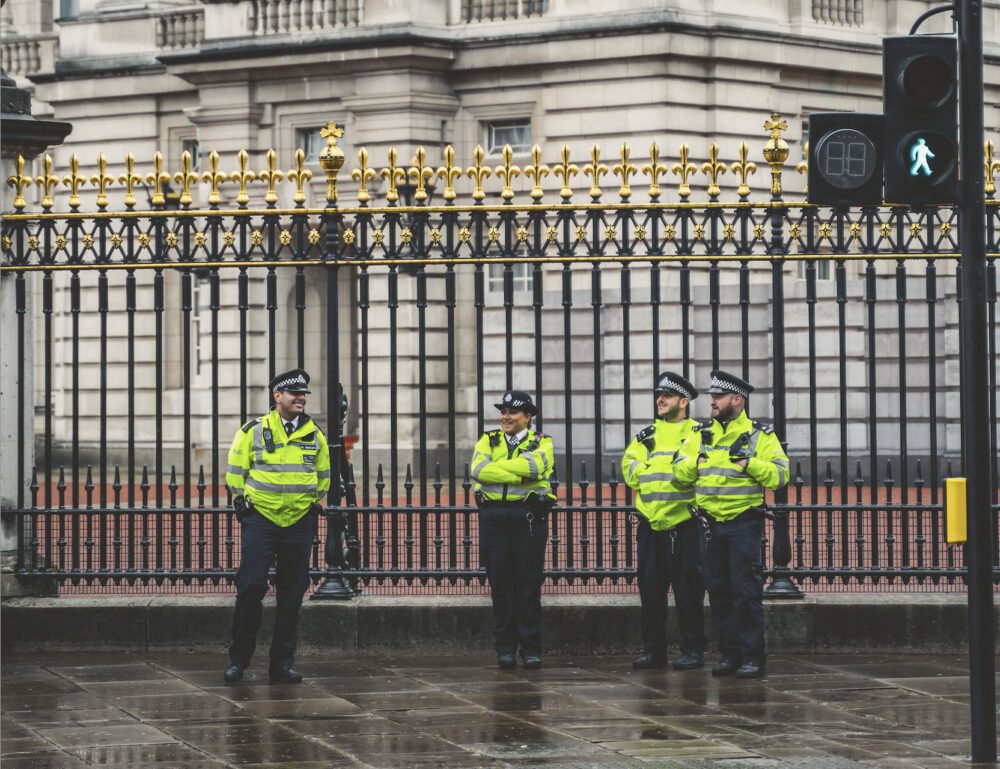This first segment of our recap highlighted the significant updates to the NIJ body armor specifications, including the much-anticipated changes to the 0101.07 standard, the introduction of the 0123.00 threat repository, and the transformative new specifications for stab-resistant armor under 0115.01. Now, in this second instalment of our comprehensive review of PASS 2023, we pivot to the research frontiers of personal armor, and review some of the symposium sessions which will impact the near future of body armor development.
New evaluation of composite covers on ceramic strike-faces
In What is the Effect of Composite Covers on Ceramics in Hard Armour Plates? the authors investigated the performance implications of composite covers on the strike-faces of ceramic armor tiles, when used in ceramic-composite armor systems. All ceramic plates have composite backers, but comparatively few have multiple layers of a composite fabric or other form of constraint layer on their strike-face.
How composite strike-face covers influence ceramic armor performance has been unclear for years. Certain papers, such as Sia Nemat-Nasser’s “The effect of thin membrane restraint on the ballistic performance of armor grade ceramic tiles,” have observed as much as a 30% performance improvement. Certain others, such as Ian Crouch’s “A study of the penetration behaviour of mild steel-cored ammunition against boron carbide ceramic armours”, have noted performance gains which were at best equivocal – or even a performance reduction on an equal-weight basis. In all, there’s a scattered landscape of results due to variations in experimental design—ranging from the type of ceramics and composites used to the ballistic testing procedures and the nature of the projectiles. This lack of standardization leads to challenges in directly comparing studies and drawing definitive conclusions about the efficacy of certain designs over others.
What the authors of this paper found is that plain-woven fiberglass composite covers do not meaningfully improve performance – and, on an equal-weight basis, may even reduce performance – but that tensioned or highly-aligned composite covers might be able to substantially improve performance at only a small penalty to system areal density.

The authors suggest that novel manufacturing techniques, like filament winding with pre-tensioned yarns, can significantly enhance the protective capabilities of ceramic armor systems, potentially leading to the development of armor with lower areal density and increased multi hit capability. This, however, is a technique that might not be applicable to traditional body armor systems with curved ceramic tiles or “tile array” construction – the tests were done on flat monolithic tiles – so there are some manufacturing and even conceptual hurdles to overcome!
Stab-resistant armor threat assessment and a plan for expanded coverage
In Bladed Weapon Assaults and Human Vulnerability, experts from London’s Metropolitan Police provided a critical analysis of knife-related crime within England and Wales, with a stark figure of nearly 50,000 offenses in a year, underscoring a particular threat to law enforcement. More than a fifth of these incidents occurred within the jurisdiction of the Metropolitan Police. A granular examination of fatal incidents in the Greater London area revealed that the majority of lethal injuries inflicted by bladed weapons occur in the torso and neck areas—sites of vital blood vessels and organs.
The study notes that while the torso of Met Police officers is well-protected by their standard body armor, other areas remain vulnerable, particularly the neck, lower abdomen, arms, and legs, which are challenging to safeguard without impeding movement or comfort.
To address these vulnerabilities, the study proposes a concept known as Supplementary Knife Resistance (SKR). This innovation involves the integration of additional protective materials that are flexible enough to conform to the body’s movements, expanding coverage without restricting operational agility. The SKR is designed to overlay the standard-issue body armor, extending protection to areas that are traditionally exposed due to the need for mobility, particularly the area under the arms, on the sides of the torso, and around the upper shoulder girdle. By implementing SKR, there’s an estimated increase in the area of knife resistance by 10 to 15 percent. The SKR aims to provide a balanced solution that augments protection while ensuring the police officers can perform their duties without hindrance. The Met’s presentation closed in noting that SKR has already been fielded on a limited trial basis.

In the image above, the blue area corresponds to the area of coverage of the Metropolitan Police’s standard stab-resistant vest. The light red area corresponds to the extra coverage offered by the SKR.
Close-proximity burst fire and shot spacing onto armor plates
In Rifle Burst Fire Testing – Probability of Number of Impacts on Hard Armour Panel researchers with the Indian Institute of Technology investigated the shot spacing of rifles, fired in three-shot burst mode, onto large ceramic armor tiles. (1000 square centimeter armor plates, so roughly 12×13.75” or 300x350mm.)
The rifles tested were the 7.62x39mm AK-47, the 5.56x45mm INSAS, and the 7.62x51mm Sig Sauer 716. All of these were fired by experienced Indian Army marksmen in three-shot bursts at hard armor panels situated just 10 meters away.
Testing revealed that maintaining a tight intershot distance of 25mm is challenging, with most impacts spread between 25 to 100mm, indicating that even for highly-skilled shooters just 10 meters from their targets, placing a three-shot grouping within a 1000 square centimeter area is hard to achieve under burst conditions. The INSAS was the most accurate rifle in burst-fire mode, followed closely by the AK-47, and the Sig Sauer 716 struggled with accuracy due to its significant recoil. That said, the AK-47 deposited the most kinetic energy on-target and degraded the ceramic armor targets more than the other two rifles.
The investigation suggests that body armor testing standards might be reassessed to better mirror the variable outcomes of burst fire in actual combat scenarios – in particular, the researchers note that a six-shot requirement for 7.62x51mm and 7.62x54mmR threats may be unrealistic and unjustified, as it’s extremely unlikely that even a burst from close range would lead to more than 2-3 impacts onto a size-XL plate.
References
B.B. Johnsen, D.B. Rahbek, “What is the effect of composite covers on ceramics in hard armour plates?”, 16th International Personal Armour Systems Symposium 2023, Dresden, Germany, September 11-15, 2023.
J. Barnes-Warden, P. F. Mahoney, “Bladed Weapon Assaults and Human Vulnerability”, 16th International Personal Armour Systems Symposium 2023, Dresden, Germany, September 11-15, 2023.
H. Chouhan, K. Kartikeya, K. Ram, A. Ahmed, M. Singh, N. Bhatnagar, “Rifle Burst Fire Testing – Probability of Number of Impacts on Hard Armour Panel”, 16th International Personal Armour Systems Symposium 2023, Dresden, Germany, September 11-15, 2023.








